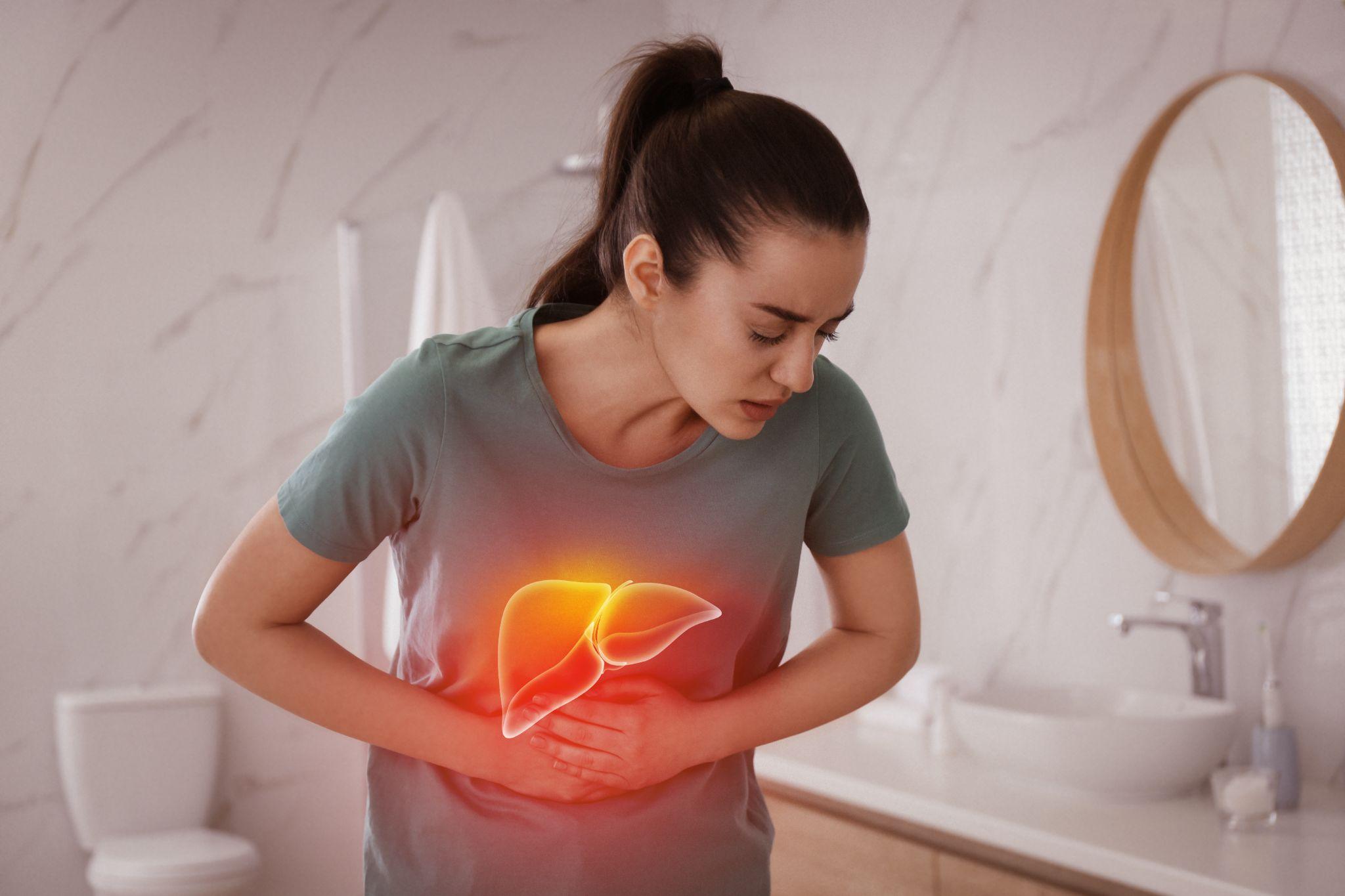Alcohol consumption is a common part of social life in the United States, but whether excessive or binge drinking occurs, it can take a severe toll on the body, particularly the liver. Alcohol-associated liver disease (ALD) is a direct result of long-term, excessive drinking.
For people with alcohol addiction or for loved ones who are concerned, understanding the risks and consequences of alcohol and liver disease is essential. Early intervention and recovery are crucial to preventing irreversible damage.
What Is Alcohol-Associated Liver Disease?
Alcohol-associated liver disease refers to a range of conditions that result from prolonged alcohol abuse. The three types of liver disease range in severity and include fatty liver, alcoholic hepatitis, and cirrhosis:1
1. Fatty Liver (Steatosis)
This is the earliest stage of alcohol-related liver disease. It occurs when fat builds up in the liver due to excessive drinking. At this stage, there may not be any noticeable symptoms, but the damage is already happening. Fortunately, fatty liver can be reversed if any amount of alcohol use is stopped early enough.
2. Alcoholic Hepatitis
If one doesn’t stop drinking alcohol, inflammation of the liver, known as alcoholic hepatitis, may develop. Symptoms of alcoholic hepatitis include jaundice (yellowing of the skin and eyes), abdominal pain, nausea, and vomiting. This stage of liver disease is more severe than fatty liver and may require medical intervention.
3. Cirrhosis
The most advanced form of ALD is cirrhosis. This is when healthy liver tissue is replaced by scar tissue, which impairs the liver’s ability to function. At this stage, liver damage is often irreversible, and the risk of liver failure, cancer, and death increases significantly.
How Is Alcohol-Associated Liver Disease Caused?
To understand how alcohol harms the liver, it’s important to first know the liver’s key role in overall health. Located on the right side of the abdomen beneath the ribs, the liver performs vital functions, such as producing bile to help digest fats, metabolizing nutrients like carbohydrates, fats, and proteins, and producing necessary substances for blood clotting. Additionally, the liver acts as a filter, removing harmful toxins—including alcohol—from the bloodstream.2
When alcohol is consumed, it travels from the stomach and intestines into the bloodstream and is then transported to the liver. The liver breaks down alcohol using enzymes, but this process creates harmful byproducts that can damage liver cells.
A heavy drinker may have a buildup of fat within the liver, which can interfere with its normal function. Over time, this process also triggers inflammation and fibrosis, a condition where scar tissue forms in the liver.2
As a result, the liver becomes less capable of performing its essential functions, such as filtering toxins and metabolizing nutrients. People who drink continuously worsen this damage, often leading to advanced liver diseases such as hepatitis or cirrhosis.2

Why Recovery Is Important Now
Recognizing alcohol-induced liver damage is a vital first step. However, the urgency of taking action cannot be overstated. Here are some reasons why recovery from alcohol abuse is crucial right now:
Liver damage worsens over time. Even if someone isn’t experiencing severe symptoms yet, the disease may be advancing. The earlier someone stops drinking, the more likely they are to prevent permanent damage. For those in the early stages of fatty liver or mild alcoholic hepatitis, stopping alcohol use can reverse much of the damage.
Reducing the risk of complications. Alcohol-associated liver disease doesn’t just affect the liver. It increases the risk of other serious health problems like liver cancer, kidney failure, and cardiovascular issues. The sooner someone stops drinking, the more they lower their risk for these life-threatening complications.
Improved quality of life. Living with advanced liver disease can be painful and debilitating. Symptoms like fatigue, abdominal pain, and jaundice can severely impact daily life. Recovery not only prevents the worsening of these symptoms but can also lead to a noticeable improvement in overall well-being.
Avoiding irreversible damage. Once cirrhosis develops, liver function is significantly impaired, and the damage is often permanent. Early intervention through stopping alcohol consumption is essential to avoid reaching this point of liver failure or even a liver transplant. For those who already have cirrhosis, quitting drinking can prevent further damage and give the liver a chance to function as well as possible.
Taking the First Steps Toward Recovery
Deciding to stop drinking and start recovery is a difficult but life-saving decision. Here are some steps to begin the process:
1. Seek Medical Help
It’s crucial to see a healthcare provider, especially if liver disease is suspected. Doctors can run tests like CT scans to assess the extent of liver damage and recommend appropriate treatments. Detoxing from alcohol should be done under medical supervision, as withdrawal can be dangerous without professional support.
2. Find a Support System
Recovering from alcohol addiction is challenging, but having a support network of family, friends, and professional counselors can make a world of difference. Whether it’s through group therapy, individual counseling, or a structured rehabilitation program, support is essential for long-term success.
3. Adopt a Healthy Lifestyle
A balanced diet, regular exercise, and mental health care are all key components of a healthy recovery. Since alcohol has likely taken a toll on the body, focusing on nutrition and self-care will help the liver heal and improve overall health.
4. Stay Committed
Recovery is a long-term process that requires ongoing commitment. Even after the initial detox and early stages of recovery, individuals will need to stay vigilant to avoid relapse. Maintaining a structured routine, avoiding triggers, and continuing therapy are all important strategies for staying on the path to sobriety.
Start Your Healing Journey Today With Lumina Recovery
Alcohol-associated liver disease is a serious condition that can progress quickly if left unchecked. However, recovery is possible, and the sooner it begins, the better the outcome will be. Whether you’re someone struggling with alcohol addiction or a concerned loved one, understanding the risks and taking steps toward recovery is the best way to ensure a healthier future.
Lumina Recovery’s alcohol addiction program, combined with its therapy options, provides individuals with the crucial support and medical care needed to address alcohol-associated liver disease and promote long-term recovery before irreversible damage occurs.
Contact us today to learn how our recovery programs can help you or a loved one overcome alcohol addiction and start the healing process.
Sources:


